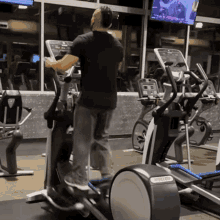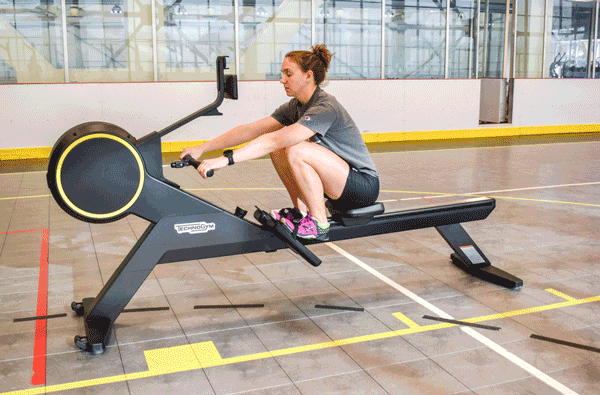Cardio workouts are a cornerstone of effective weight loss strategies and are also excellent for boosting overall health and fitness. However, before you jump on that treadmill or start your favorite aerobic routine, it’s important to understand how cardio truly impacts your weight loss journey. How effective is cardio for shedding those extra pounds? Can it specifically target fat loss? And just how much cardio is necessary to see meaningful results? Let’s explore these questions in detail to give you a comprehensive understanding of cardio’s role in achieving your fitness goals.
Understanding Cardio
When discussing cardio or aerobic workouts, we’re referring to any activity that elevates your heart rate and makes you sweat. This includes exercises like running, biking, and dancing. Cardio, which stands for cardiovascular exercise, is crucial for keeping your heart and lungs healthy. Essentially, it’s about increasing your blood circulation and getting your heart pumping. The great thing is, you can perform cardio workouts anywhere – at home, outdoors, or in the gym.
Exploring Different Cardio Exercises
Cardio exercises come in many forms, providing plenty of options to get your heart pumping, whether at home, outdoors, or in the gym. The key is finding an enjoyable workout that matches your fitness level.
you might prefer steady-state cardio, like jogging or cycling at a constant pace for extended periods. Here are some other cardio options:
- Brisk walking
- Swimming
- Rowing
- Stair climbing
- Dancing
- Hiking
- Recreational sports like basketball, soccer, pickleball, etc.

Whether your goals include burning calories, reducing stress, strengthening your heart, or boosting your energy levels, there’s a cardio workout to fit your needs and preferences.
The Comprehensive Benefits of Cardio Exercise
Incorporating cardio exercise into your fitness routine offers numerous health benefits, making it an essential component for overall wellness. Each type of cardio brings unique advantages tailored to specific fitness goals, but there are several universal benefits shared by all cardio workouts:
- Enhanced Cardiovascular Health: Regular cardio strengthens your heart, making it more efficient at pumping blood.
- Increased Endurance and Strength: Cardio boosts lung capacity, improving your breathing during workouts and everyday activities.
- Lower Risk of Chronic Diseases: Engaging in cardio helps prevent obesity, diabetes, and high blood pressure. Weight-bearing cardio also supports bone health, reducing the risk of osteoporosis.
- Improved Mental Well-being: Cardio is an effective stress reliever, enhancing your mood and overall mental health.
- Effective Calorie Burning: Cardio workouts are excellent for burning calories and aiding in weight loss.
Cardio for Weight Loss: Evaluating Its Effectiveness
Understanding the impact of cardio on your body is crucial for recognizing its role in weight loss. Cardiovascular exercises elevate your heart rate and enhance blood circulation, which not only improves overall cardiovascular health but also contributes significantly to calorie burning.
How Does Cardio Aid in Weight Loss?
Cardio workouts are highly effective for burning calories, a key component in achieving a calorie deficit necessary for weight loss. Depending on the intensity, you can burn anywhere from 200 to over 500 calories per hour through cardiovascular activities. This calorie expenditure is vital, as weight loss fundamentally requires consuming fewer calories than your body uses.
How Much Cardio is Needed for Weight Loss?
For overall health and effective weight management, experts recommend:
- At least 150 minutes of moderate-intensity cardio exercise per week, or
- 75 minutes of high-intensity cardio exercise per week
Although this may seem daunting at first, breaking it down into manageable sessions can help. For instance, you can achieve 150 minutes by doing 30-minute workouts five days a week. Alternatively, four 40-minute sessions spread throughout the week can also meet this goal. The amount of cardio needed for weight loss varies based on individual goals, fitness levels, and dietary habits. Consulting with a personal trainer can be immensely beneficial, as they can create a customized program tailored to your specific needs. Additionally, guidance on nutrition and recovery is crucial for achieving and sustaining your weight loss goals.
Top Gym Cardio Workouts to Try
The gym offers a plethora of options for an effective cardio workout, thanks to the wide array of machines and equipment available. Here are some of the most popular cardio exercises you can incorporate into your gym routine:
1. Treadmill Running
Running on the treadmill is a staple cardio workout that can easily be adjusted to suit any fitness level. By setting the treadmill to a pace of 6 mph, which is equivalent to a 10-minute mile, you can effectively elevate your heart rate and increase calorie burn. Engaging in this activity for 30 minutes can burn approximately 350 calories, making it an efficient way to work towards your weight loss and fitness goals.

2. Cycling on a stationary or exercise bike
Cycling at a moderate intensity on a stationary bike is an excellent way to get your cardio in. Riding at this level for 30 minutes can help you burn around 450 calories, making it an effective workout for weight loss and cardiovascular health. The adjustable resistance levels on stationary bikes allow you to tailor the workout to your fitness level, ensuring a consistent challenge as you progress. Additionally, cycling is a low-impact exercise, which means it’s gentler on your joints compared to other high-impact cardio workouts. This makes it a suitable option for individuals of all ages and fitness levels, including those recovering from injuries.

3. Working out on the elliptical
Working out on the elliptical machine is an excellent way to get your heart rate up while minimizing impact on your joints. A 30-minute session on the elliptical can burn between 250 and 350 calories, depending on your body weight and intensity level. This versatile machine allows you to adjust the resistance and incline, providing a customizable workout that can target different muscle groups. The elliptical is particularly beneficial for those with joint concerns, as its smooth, gliding motion reduces strain on the knees and hips.

4. Using Rowing Machine
Using the rowing machine is an effective full-body cardio workout that engages multiple muscle groups, including your legs, core, and upper body. A 30-minute rowing session can burn between 250 and 500 calories, depending on your intensity and body weight. This low-impact exercise is excellent for building cardiovascular endurance while also strengthening muscles and improving overall fitness. The rowing machine allows you to control the resistance and pace, making it suitable for both beginners and seasoned athletes. By mimicking the rowing motion, you enhance your coordination and promote muscle balance.

Conclusion
Incorporating cardio into your fitness routine is essential for achieving and maintaining weight loss. Whether you prefer running on a treadmill, cycling on a stationary bike, or exploring other forms of cardio, the key is to find activities you enjoy and can commit to consistently. Cardio not only helps in burning calories but also offers a range of health benefits, including improved cardiovascular health, increased endurance, and enhanced mental well-being.
By understanding how much cardio you need and the various options available, you can tailor your workouts to meet your personal goals and preferences. Remember, the most effective cardio workout is one that you can integrate into your lifestyle and maintain over the long term. So, choose activities that you find enjoyable and challenging, and watch as you make significant strides toward your weight loss and overall fitness goals.